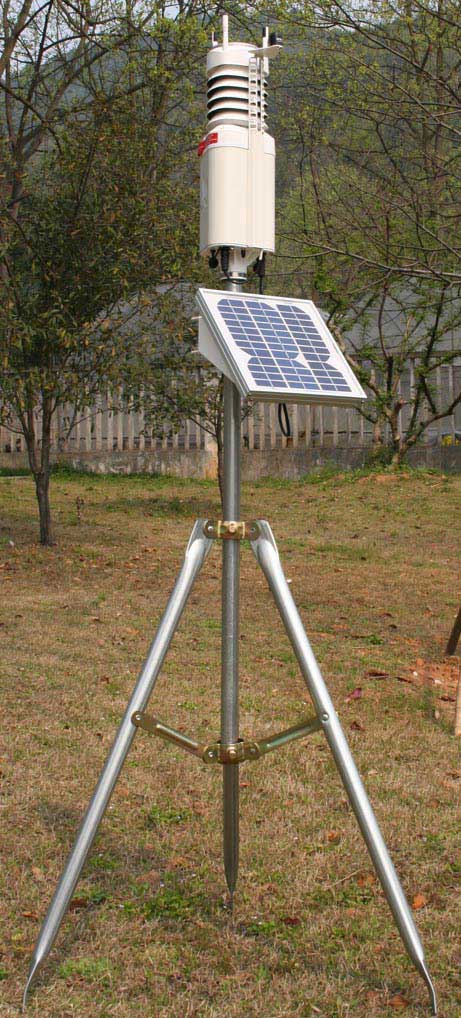|
WeatherHawk Series 500 Weather Station

The WeatherHawk Series 500 family of weather stations measure and record wind speed and direction, air temperature and relative humidity, barometric pressure, solar radiation, and rain. In addition, the system calculates and exports an evapotranspiration (ET) value that can be used by third party systems for irrigation control. They are designed for applications where a minimal visual impact, high reliability, and a long interval between routine servicing are significant factors in the decision to purchase. Models 510/511
These versions of the Series 500 weather station are directly connected to a host device (PC or server) through an RS232 serial data I/O located on the bottom of the weather station. The Model 511 incorporates a thermostatically controlled heater element in the sensor head that keeps the ultrasonic wind sensor elements and the piezometric precipitation sensor surface free of snow and ice to *o C. Models 520/521
These versions of the Series 500 weather station are wireless to a host device (PC or server) using fully integrated industrial grade 916 MHz spread spectrum RF communications technology. They also have an RS232 serial data I/O located on the bottom of the weather station, which can be used as a second serial communications port, or for programming and testing the system, or for direct data downloads using a PC or PDA. The Model 521 also incorporates a thermostatically controlled heater element in the sensor head that keeps the ultrasonic wind sensor elements and the piezometric precipitation sensor surface free of snow and ice to *o C. Optional configurations of both units enable replacement of the 916 MHz RF components with 922 MHz and 2.4 GHz RF components to comply with local, regional or national radio frequency licensing requirements. Sensor Technologies Wind Speed & Direction is measured by a sensor consisting of three equally spaced ultrasonic transducers in a horizontal plane. The sensor measures the bi-directional transit time along the three paths established by the transducer array. This transit time is dependent on the wind velocity across the ultrasonic path. For zero wind velocity, both the forward and reverse transit times are identical; with wind, the upwind transit time increases and the downwind time decreases. The values of any two array paths will enable computation of both wind speed and direction, and a signal processing technique enables the measurement to be calculated using the two array paths of the best quality. If the system is used in a high accuracy application a factory recalibration is recommended every five years.
Rainfall is measured with a stainless steel piezometric surface on top of the weather station. As individual raindrops (or hailstones) impact on the surface they each provide an acoustic signature that is measured and processed in real-time to give a value for their volume. The volume is then processed with respect to time to provide a rainfall rate. This measurement technique eliminates all of the traditional problems with tipping bucket type rainfall measurement devices, including worn or damaged bearings, clogged funnels and drip orifices, and damage from wind blown debris.
Air temperature and relative humidity (RH) sensors are combined in an integrated, user replaceable unit that requires no calibration. The RH sensor is a thin polymer, capacitive type sensor that degrades with exposure due to age and airborne contaminates. It should be user replaced every three years to maintain accuracy, and at a shorter interval if the location is subject to high levels of air pollution or is subject to airborne chemical spraying. The air temperature sensor is a capacitive ceramic sensor that is typically not subject to environmental degradation.
Barometric pressure is measured with a capacitive silicon temperature corrected strain gauge device that is typically not degraded by environmental exposure and does not require calibration after manufacture.
Solar Radiation is measured by a silicon pyranometer with a cut filter limiting the spectral exposure to the 300-1100 nm wavelength. This device typically degrades at a rate of 2% of the full scale value each year and should be recalibrated, or replaced every 3-5 years, depending on the application.
Data Transfer Protocols, Software and Data Interface Hardware
All WeatherHawk systems communicate using a proprietary Pakbus protocol. Any qualified software developer may request a software development kit, at no charge, to assist in the development of software drivers for third party devices or software.
|

